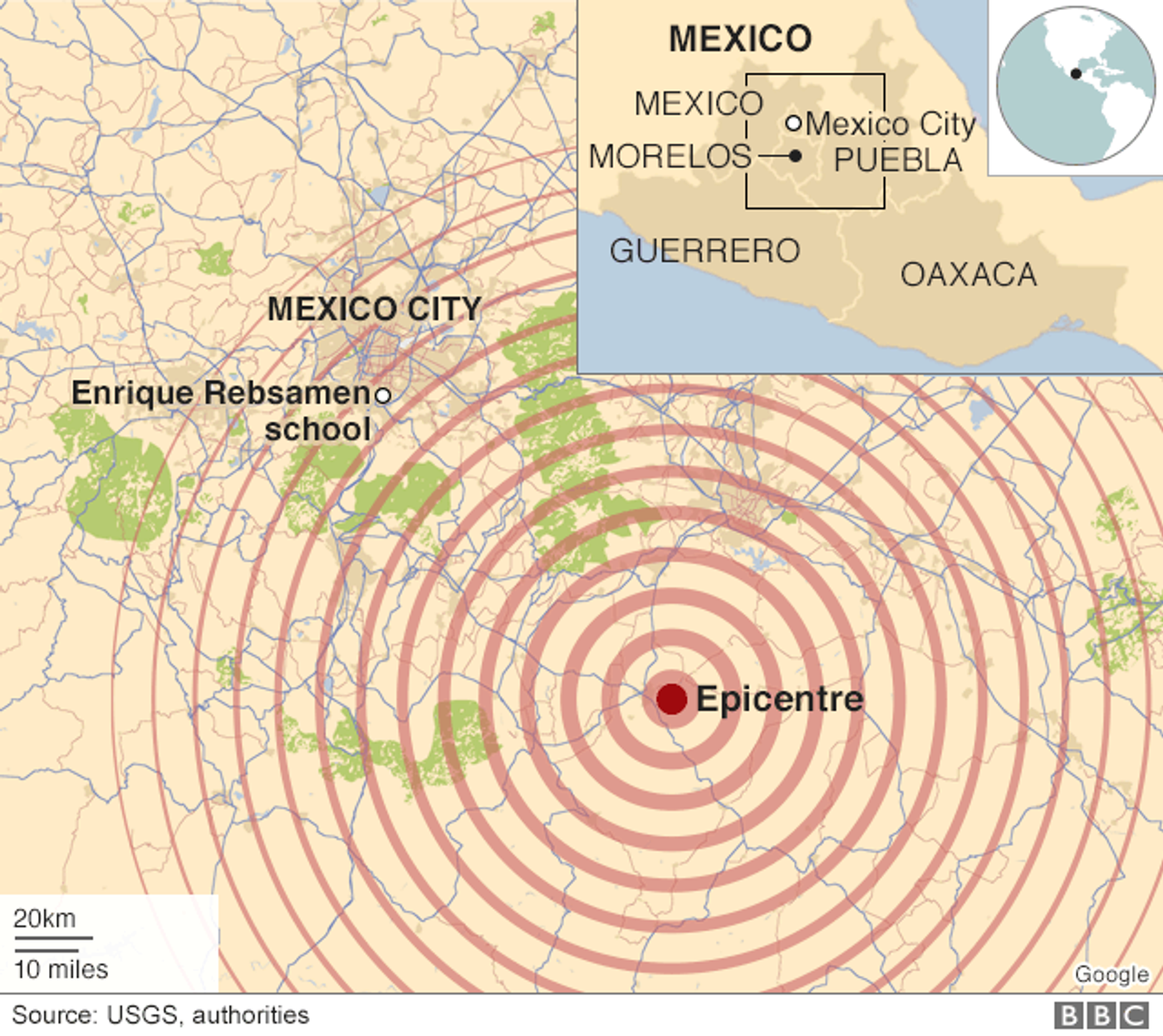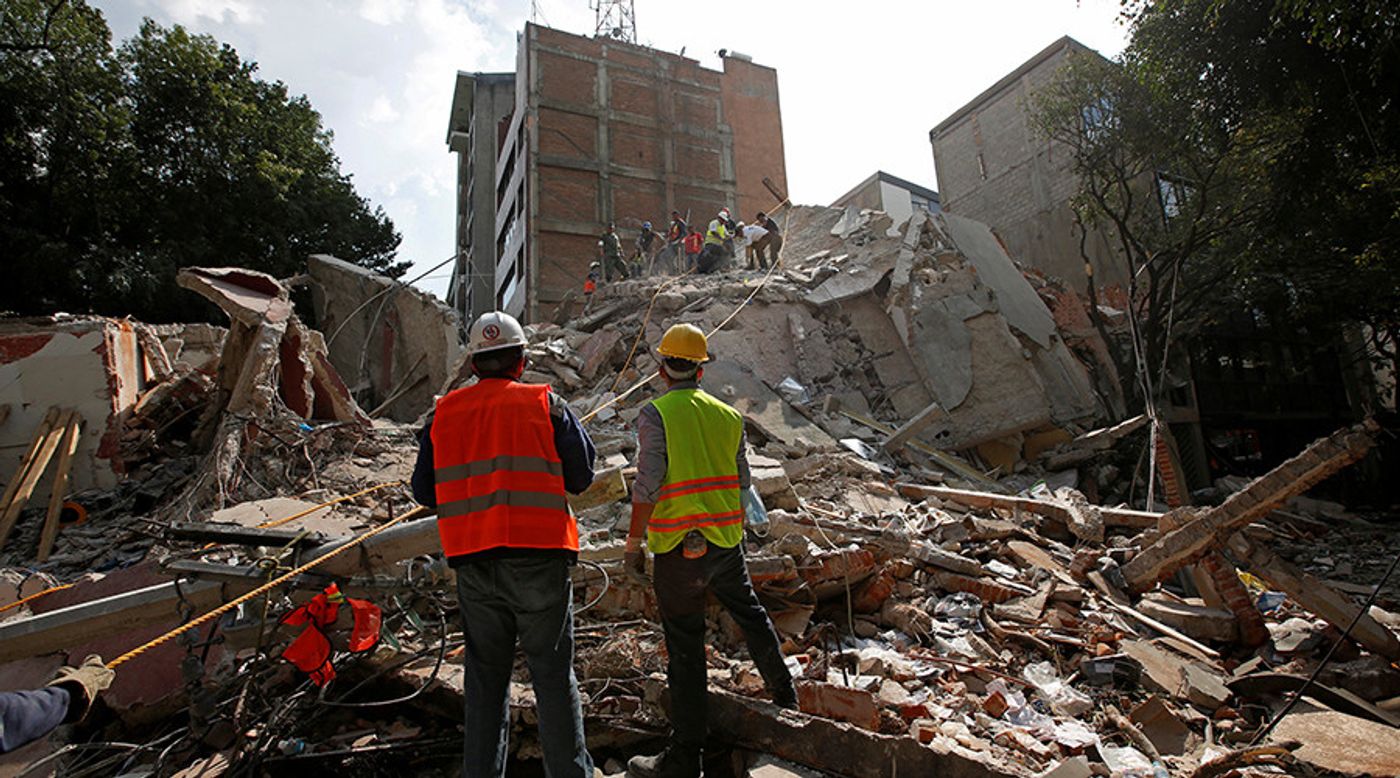7.1 Magnitude earthquake rocks Mexico
A 7.1 magnitude quake has devastated Mexico City and surrounding states, with over 200 confirmed dead already and estimates of fatalities reaching from 1,000-10,000. Dozens of buildings in the capital city have collapsed, including several schools and churches. President Enrique Peña Nieto said that more than 20 children died and 30 are missing.
Over 20 million people populate Mexico City and the metropolitan area is one of the most densely populated cities in the world. This doesn’t bode well with its geologic location: Mexico lays on top of three of the Earth's largest tectonic plates - the North American, Cocos and Pacific plates – and therefore is an extremely seismic region.
According to the US Geological Survey, the epicenter of this earthquake was near Atencingo in Puebla state, about 120km (75 miles) from Mexico City, with a depth of 51km. The longest tremor hit at 1:14 PM local time yesterday. This area is precisely between the boundary of the North American and Cocos plates and it isn’t the first time that its residents have experienced tremors. Over the last 100 years, the US Geological Survey has reported 19 earthquakes of at least 6.5 magnitude within 155 miles of the epicenter of Tuesday's earthquake.
Following yesterday’s quake, emergency authorities have been working round the clock to search for and rescue people who are trapped in the rubble. As of last night, approximately two million people in the capital were without power electricity or phone connections. According to Mexico's Federal Electricity Commission, roughly 70% of the electricity supply is now up and running again.
In a twist of irony, the earthquake struck soon after an earthquake drill that was meant to commemorate the 1985 quake that killed over 10,000 and injure an additional 30,000.










